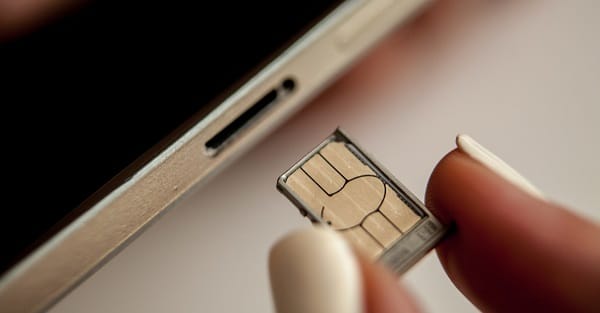SIM Swap Fraud and Ways to Avoid It

Cellphones have influenced how we live life. With their ever-increasing features, they’re a must-have for many across the globe. Unfortunately, they can also provide cybercriminals with access to your financial accounts through your mobile number. This is possible through SIM swapping.
What is SIM swapping?
Also known as SIM jacking, SIM splitting and port-out scamming. It’s where a criminal steals your mobile number. Criminals do this by tricking cell phone providers into transferring your mobile number to their SIM card.
How do SIM swap attacks work?
Despite mobile phone security upgrades over the years, how SIM swap fraud works haven’t changed much. The criminals obtain personal information like addresses and security code questions by snooping on social media platforms. They then contact your mobile phone provider pretending to be you, request a SIM swap, and change personal settings.
In other situations, fraudsters have an inside man who assigns your number to another SIM. Recently, fraudsters have been requesting a PAC (porting authorization code) to port the victim’s number to another network. Once they own the number, they can intercept bank authorizations sent through a call or SMS and drain your accounts or take a loan in your name.
SIM swap scam statistics
With the security measures mobile providers have in place, how easy is it for fraudsters to steal your phone number?
To determine how easy SIM swapping is, researchers at Princeton tested five mobile providers in the US. They were shocked to succeed in making 39 out of 50 SIM swaps attempted. If a fraudster has their sights set on your mobile number, you are at a disadvantage.
The most famous SIM swap scam was in 2019 when fraudsters used it to hijack the Twitter account of Twitter CEO Jack Dorsey’s and post racist tweets in his name. While no serious financial damage was done, the attack made the public aware of the seriousness of the scam.
Another SIM swap attack was in 2018, when criminals swapped the SIM of cryptocurrency investor Michael Terpin. Terpin lost $23.8 million due to the SIM swap.
Signs of SIM swap fraud
If you notice any of the signs below, get in touch with your mobile phone provider ASAP:
- No cellphone service despite having great reception. If you cannot receive texts or calls or your phone loses service even when there’s reception, contact your service provider.
- You are locked out of your mobile phone’s online account.
- Your phone service notifies you of things you haven’t done. Be on the lookout for notifications of suspicious activities. Usually, mobile providers will send a notification when something out of the ordinary happens.
How to prevent SIM swapping
Lock your mobile number with your carrier
Most carriers offer their customers a port freeze to protect their numbers from unauthorized transfer. Once blocked, the number cannot be transferred to another carrier or line unless you remove the freeze with a PIN or physically visiting the store.
Limit personal information shared online
Fraudsters use the information you provide online to convince carriers they are you. Avoid posting your details online, including your phone number, address, full name, and birth date. Also, avoid blasting details of your personal life on social platforms, as you might have set up some of these details as security questions to verify your identity.
Don’t fall for phishing texts, calls, and emails
Phishing messages are a popular method criminals use to acquire sensitive information. They’ll impersonate trusted institutions and hope that you won’t hesitate to answer their questions. Remember, the government, your bank, and reputable health offices won’t get in touch all of a sudden to get personal information.
Use security questions and strong passwords
Set up a strong password that’s impossible to guess. A strong password contains 12+ characters. Moreover, use identity questions that even close acquaintances cannot guess.
Set up a fraud alert
You could prevent SIM swap fraudsters from getting a loan with your details by setting up a fraud alert. The alert is attached to your credit report so that any lender who reviews your credit following a loan application will have to complete extra steps in identity verification.
While the fraud alert doesn’t affect your credit score, it can cause delays in your applications.
What to do if your SIM is swapped
If you suspect you are a victim of a SIM swap scam, you should contact your mobile carrier and alert them you didn’t make the changes. Also, contact your bank and credit card company and check your account for fraudulent transactions.
A SIM swap that leads to fraudulent transactions is classified under true fraud. In this case, the bank will open a fraud claim and investigate within ten days. If they cannot finalize investigations within this deadline, they can request an extension to 45 days but temporarily refund the transaction in question.
According to the Federal Fair Credit Billing Act in the US, if your credit card details were used to perform the fraud, you aren’t liable for any charges. However, according to the U.S. Electronic Fund Transfer Act , if the fraud is perpetrated using your debit card and it is reported within two business days your liability is limited to $50. If you take longer than two business days, it rises to $500. If 60 days elapse before reporting, you may be liable for the entire amount.
Reminder of what to do
To avoid falling victim to SIM swap fraud, be extra cautious with where and with whom you share your details. Always ensure you create strong passwords and enable two-factor authentication for every account that offers it. Lastly, monitor your credit card and bank account details regularly, so you can quickly report any fraud as it occurs and avoid liability. For more information on how SIM swap fraud can affect liability for credit card fraud, feel free to contact us at Justt.
Contact us to learn more about Justt’s solution






